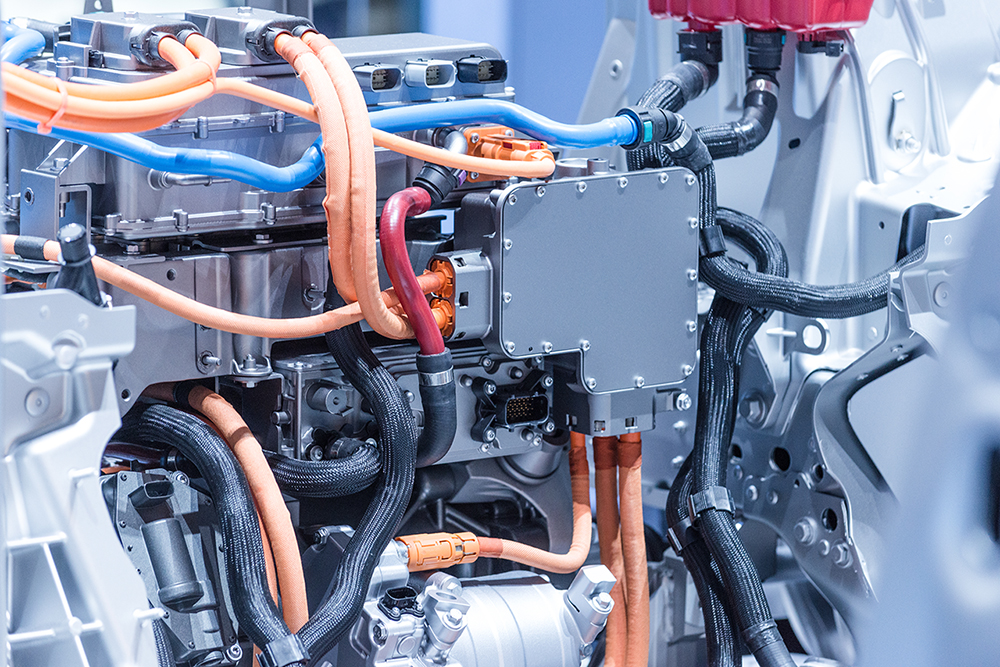Generative design accelerates EV electrical system engineering

In a previous blog, I covered the benefits that generative design can bring to bear on the development of an autonomous vehicle, and its electrical and electronic (E/E) architecture in particular. You can read that blog by clicking here.
In brief, generative design takes system definitions and requirements as input and generates architectural proposals for the logic, software, hardware, and networks of the vehicle’s electrical and electronic systems using rules-based automation. These design rules can capture company knowledge and the experience of veteran engineers, integrating this IP into each synthesized design. Furthermore, automated design synthesis accelerates the engineering of various electrical systems, and enables rapid iteration to arrive at optimized designs.
These capabilities will allow engineers to manage the inherent complexity of autonomous vehicle design more effectively, reducing errors related to manual data entry, and accelerating design iteration to produce better self-driving vehicle platforms. Such capabilities will prove critical to the development of these advanced vehicle platforms.
Self-driving vehicles, however, are still years from mainstream viability. As self-driving technology continues to develop, the automotive industry is undergoing another upheaval: electrification (figure 1). Electric vehicle (EV) sales have grown tremendously over the last decade. According to the International Energy Agency’s Global EV Outlook (2019), the global stock of hybrid and electric passenger vehicles eclipsed 5 million in 2018. This was a 63% increase compared to the previous year. Access to electric vehicle charging points has also improved, with an estimated 5.2 million worldwide.

As EVs continue to close the gap to IC vehicles technologically, countries around the world are announcing regulations to incentivize or even require the use of electric powertrains in new vehicles. Facing regulatory pressure and recognizing the opportunity presented by the EV market, the automotive industry has responded. EV startups have flooded the market and nearly every major automotive brand has announced plans for all-electric vehicle lineups. Generative design also has an important role to play in the development of these new electric vehicles.
Startup EV companies and long-standing automotive brands will need to account for the unique challenges of electric vehicle design. Today, vehicles of all types incorporate thousands of electrical and electronic components that enable vehicle features and critical functionality. Each of these electrically powered systems places additional loads on the vehicle battery pack. Because all-electric vehicles do not have the support of a supplemental source of power, such as an ICE, the battery is responsible for providing power to each and every vehicle system, large and small.
As a result, the number and sophistication of the electronic features on an electric vehicle has a direct effect on the drive range and performance of the vehicle. ADAS systems often incorporate cameras, radar, and ultrasonic sensors to enable lane departure warning systems, automatic braking, and more. These systems are a constant drain on the battery as they are always active.
To enhance the efficiency of the electrical and electronic systems, and thus drive range, engineers will need to perform architecture and tradeoff analyses to investigate architectural proposals. The tradeoff analyses for an EV will need to account for hundreds of components and millions of signals while optimizing function locations, network latency, error rates and more.
Other engineering challenges result from the high voltage transmission lines that bring power to the electric motor driving the car. These lines require additional design guidelines to ensure they are bundled and routed appropriately (figure 2). Electric vehicles also require extensive testing and validation to ensure safety while maximizing the drive range and performance of the vehicle. Manufacturers will need to incorporate simulated and real-world testing into their electric vehicle programs to ensure that vehicles can meet both industry safety standards and performance targets.

Most companies have little experience tackling the challenges related to electric vehicle design. Indeed, most of the companies attempting to do so are startups or companies from other industries seeking to enter a traditionally impenetrable market. These companies lack industry-specific experience and the engineering resources to brute force their way through the complexities of electric vehicle design. Even the major automotive OEMs will face problems that their legacy design flows are ill-equipped to handle.
This will be true especially as companies move their electric vehicle projects from research, development, and one-off prototyping into full-scale production. The electrical and electronic systems will need to be optimized for cost, weight, and power consumption while adhering to the stringent safety requirements prevalent in the automotive industry. To compete, these companies will need a new design methodology that enables young engineers to design accurate and optimized systems, which can only be done by capturing the experience and knowledge of veteran engineers. They will need generative design.
To read more, please check out Generative Design for EV Electrical Systems.

